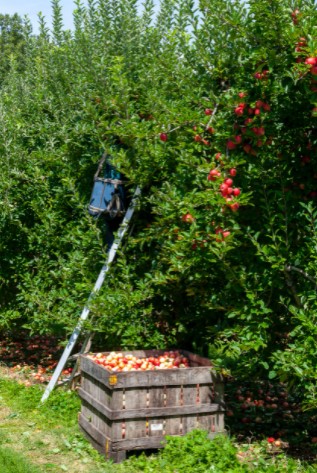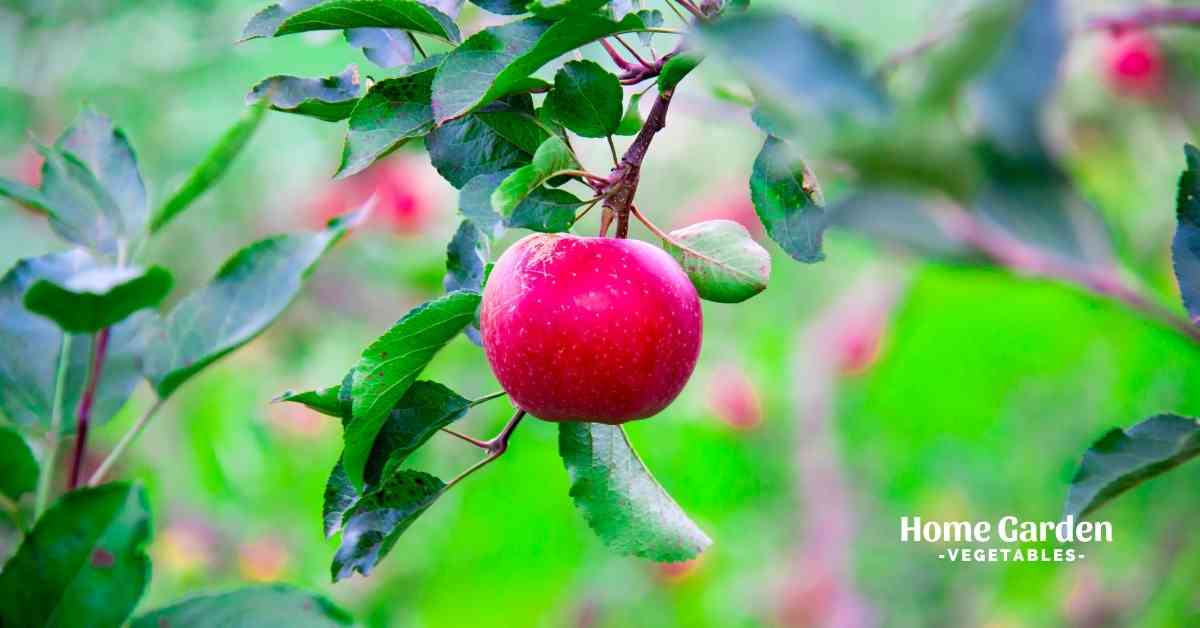Whether you have bought your apple tree from a nursery or have planted it from a seed, it requires a balanced diet of nitrogen, phosphate, and potassium, as well as a balanced meal of minor nutrients, to thrive, blossom, and produce fruit.

Fertilizing, particularly nitrogen fertilization, is an effective technique to replace nutrients in your soil. Before your apple tree reaches its fruit-bearing years, you want to foster green vegetative development, which is precisely what you want to encourage.
Reader Poll: What online courses would interest you?
When to Fertilize Your Apple Tree?
The goal of planting fruit trees is to encourage them to produce roots by keeping consistent soil moisture and the soil quality is good. You may start feeding young trees once they’ve found their feet – generally one to two years after planting – to ensure robust, consistent development.
- You may avoid using fertilizers until your apple trees start yielding fruit if you have nutrient-rich soil. Consider feeding your new apple trees in the spring if they don’t put on an average of 8 to 12 inches of fresh green growth over the growing season.
- Fertilizers are typically applied during the growing season, beginning when the soil is workable in early spring and ending by July 1. Always refer to the information provided on the label of your fertilizer for any particular fertilizer application recommendations.
- When your apple trees begin to develop fruit, their nitrogen consumption rises. As a result, fruit-bearing apple trees should get a high-nitrogen fertilizer application once in the early spring.
- Apple fertilizer should be applied uniformly to the surface, starting a foot out from the trunk and continuing well beyond the drip line. After the leaves have fallen, the best time to fertilize an apple tree is in the autumn.
- If you’re using a 10-10-10 fertilizer on apple trees, apply one pound per inch (5 cm) of the tree trunk diameter that is measured one foot from the ground up. The maximum amount you can use of 10-10-10 in a year is 2 and a half pounds.
Which Fertilizer To Use for Apple Trees?
All apple trees require nitrogen, phosphorous, and potassium, as well as different trace elements (the three digits that are present on fertilizer bags). Fertilizers for home gardeners should have a greater nitrogen ratio to promote healthy development. Apples may be fertilized using granular 20-10-10 fertilizer.
How to Start Fertilizing Your Apple Trees?
It is important to test your soil before you apply fertilizers. Different soils may need different amounts of elements to support apple tree health and development. If you find out that your soil lacks any of the necessary nutrients such as nitrogen, phosphates, potash, etc., make sure to choose a fertilizer that supplements the soil’s nutrient deficiency.
Subscribe to our newsletter!
As long as the fruit trees are little, an organic fertilizer coupled with mulch or compost is preferable. A slow-release and low-analysis organic fertilizer are released into the soil that has surrounded the tree. Thoroughly water the soil, and then covered it with mulch and compost to nourish the soil, which feeds the tree. This method of feeding fruit trees boosts soil biological activity, allowing young plants to build bonds with helpful soil bacteria that help them sustain themselves.
How Much Fertilizer Apple Trees Need?
The pH of the soil should be between 6.0 and 6.5 for all fruit trees to grow. You can add a pinch of bone meal or a beginning fertilizer mixed with water if you’re simply planting an apple seedling. Fertilize the apple tree after three weeks by spreading 12 pounds (or 226 grams) of 10-10-10 in an 18-24 inch circle (46-61 cm.).
Nutrient Deficiency in Apple Trees
If an apple tree is suffering despite careful trimming, feeding, and protection of the main stem, a liquid kelp spray is the first way to attempt. Apple trees often have micronutrient deficits, and kelp or seaweed sprays offer a variety of minerals, including zinc and calcium, in a form that apple trees may absorb as a foliar feed through their leaves.
Signs of Nutrient Deficiency in Apple Trees
In this section, we will discuss some signs that show your apple trees are nutrient deficient. Let’s discuss them briefly.
Boron Deficiency
Boron shortage causes early fruit drop, and cork production may wreak havoc on fruit quality. The damaged fruit will become seriously distorted if the internal cork forms early in the season. Dead regions form in the bark of young apple branches in severe instances.
Sulfur Deficiency
Due to sulfur deficiency, leaf growth in apple trees slows down, and the leaves become pale green/yellow in color. Moreover, necrotic patches appear towards the margins of chlorotic apple leaves. These symptoms appear first on the younger leaves.
Potassium Deficiency
Symptoms of a potassium deficiency in apple trees include burnt leaf margins, especially in leaves surrounding fruit, which is a significant potassium sink. As a result, photosynthesis may be reduced, resulting in poor tree development.
Magnesium Deficiency
On older leaves, chlorosis between the major veins is the first symptom. Interveinal necrosis or necrotic patches occur along the main vein. Leaf edges are frequently left green. Necrosis can occur in apples and other fruits without the presence of chlorosis.
Calcium Deficiency
Bitter pit appears as depressed, often black regions on the apple surface and tiny, brown corky spots within the flesh when calcium levels are low. Boron insufficiency, however, can be mistaken for calcium deficiency.
Iron Deficiency
Yellow-green interveinal chlorosis appears first on the youngest leaves, followed by lemon yellow and light yellow interveinal chlorosis. The major veins are still green. Veins become chlorotic and necrotic regions occur along the leaf margin when there is a severe deficit. You can also see symptoms of severe iron deficiency on older leaves.
Conclusion
Phosphorus is essential for the establishment of a robust root system, especially in the early stages of apple plant development. Nitrogen and potassium are essential for leaf growth, flowering, and fruit development.
However, only trace amounts of micronutrients are necessary. Boron, zinc, manganese, and iron are some of the important micronutrients.

